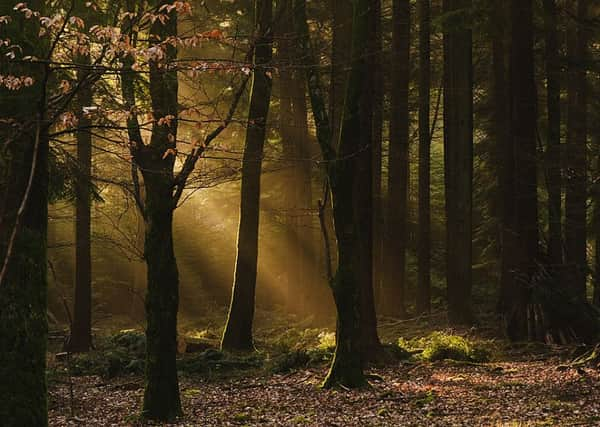Ambitious woodlands plans for the future


Such is the recognised, global urgency to take climate change seriously, signalled by the Paris agreement which came into effect on November 4, the Government has announced plans to increase England’s woodland cover from 10 to 12 per cent by 2060.
In the next four years, the pledge adds up to 11 million trees being planted, while the amount of woodland under active management is to increase to 66 per cent by 2018.
Advertisement
Hide AdAdvertisement
Hide AdGiven the demand for wood and its associated products from industry, and the need to plant woodland to assist with flood alleviation and carbon capture, the Government’s commitment to increase woodland cover offers a “once in a lifetime opportunity” to create a productive resource for future generations, according to Tilhill Forestry’s Jason Sinden.
Mr Sinden, a director at the forestry and harvesting firm, said market conditions are strong for woodland managers.
“Investment returns in the sector are good, but there is a shortage of good quality forests, especially in the younger age categories,” he said. “The UK timber processing industry is continuing to grow and develop as the forests planted in the 70s and 80s mature. However, the lack of more recent planting means there will be a shortage of timber in around 20 years’ time. Investors planting productive new forests now will be an excellent position to benefit from this.”
There are imbalances in the UK forestry market. The restocking of felled conifers lags behind the harvested area, which Fenning Welstead, partner at chartered foresters John Clegg & Co, said puts at risk productive forests at a time when demand for timber shows every sign of increasing.
Advertisement
Hide AdAdvertisement
Hide Ad“Creating new forests, however, is as important as restocking and more farmers are looking at releasing land to create outstanding forest resources for the future, potentially offering greater integration with farming,” Mr Welstead said.
North Yorkshire landowner Sir William Worsley heads a major project which is creating a large forest in the Midlands. The idea is to showcase the benefits of woodlands in a place where more than 200,000 people live.
The area where the National Forest is being created had six per cent tree cover when the project began over 20 years ago. Since, more than 8m trees have been planted over 200 sq miles.
Sir William, who chairs both the Hovingham Estate and The National Forest Company, gave an insight into the project and the Government’s plans to increase woodland cover at a seminar held by law firm Lupton Fawcett this month.
Advertisement
Hide AdAdvertisement
Hide Ad“The principal mechanism to achieve these (government) targets is through the use of Defra’s Countryside Stewardship scheme, combined with other tree planting initiatives such as Defra’s initiative for school children to plant 1 million trees,” he said. “A number of other schemes will also contribute including the Woodland Creation Planning Grant, woodland management plans advice from the Forestry Commission and the woodland carbon code. These are all designed to support land owners and managers create and manage their woodlands and realise the benefits.
“Initiatives such as the work in the National Forest will also contribute, where creation is now beyond 20 per cent of land area and the 66 per cent woodland management target will be met by April 2017. In addition, Defra is exploring new schemes to encourage woodland creation in light of Brexit and a recognition of the significant public benefit that our woodlands can provide.”